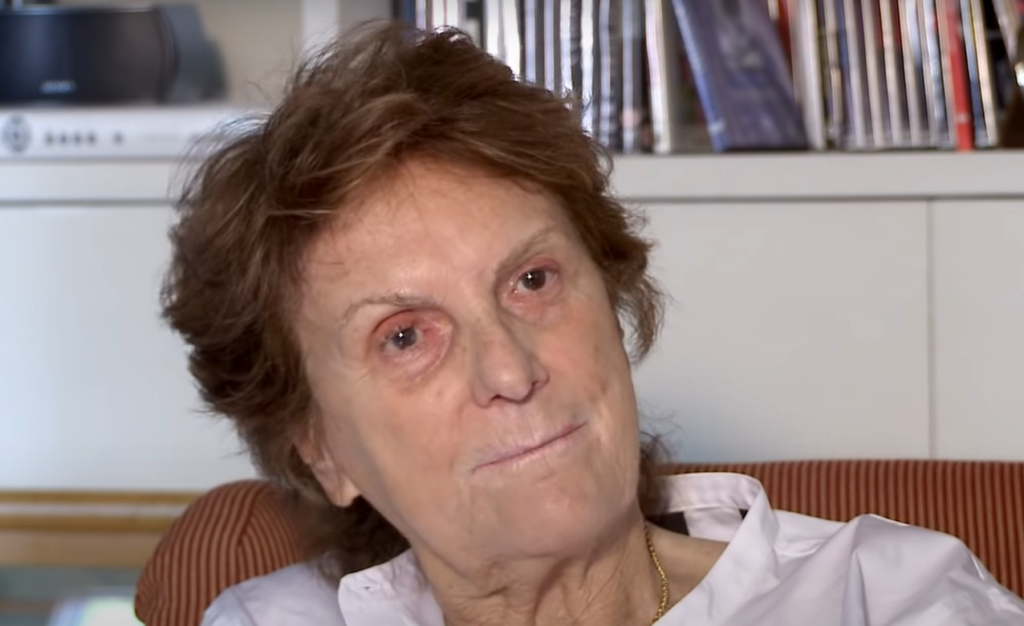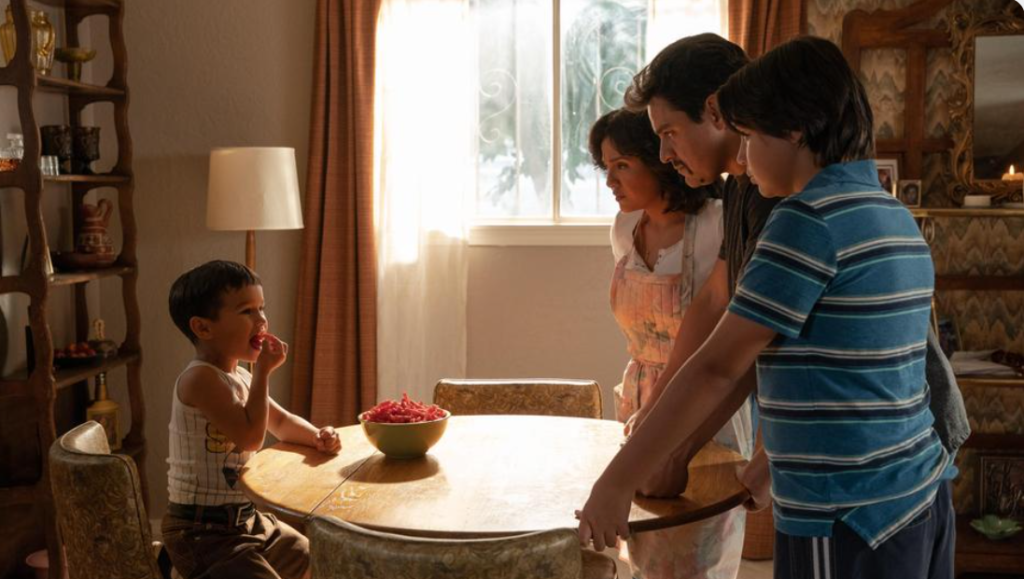Carolina Markowicz is a director and screenwriter from São Paulo, Brazil. She has directed the short film 69-Luz Square, which won several awards in many festivals around the world, including Bst Short Film at Rio De Janeiro International Film Festival, and was screened in more than 20 countries, including screenings at MoMA. Tatuapé Mahal Tower’s script was considered for the Brazilian screenplay prize “Prêmio Estímulo de Curta-Metragem of 2012,” and also won the Best Screenplay award at the Paulínia Film Festival-Brazil 2014. It is her animation debut.
Fernanda Salloum is a film art director and designer. The animated short Tatuapé Mahal Tower is her debut as a director and co-writer. She has just concluded her post-graduate studies in Scenography and Costume Design with an article about lighting as a scenographic element that will be published soon. (Press materials)
Tatuapé Mahal Tower will play at the Toronto International Film Festival as part of the Short Cuts International Programme 1 on September 12.
WaH: Please give us your description of
the film playing (and title of the film).
CM/FS: Tatuapé Mahal Tower is an animated short about the existential drama of a scale-model figure. Juarez is an Argentinian who lives in São Paulo and works in the city’s real-estate developments. The film shows how a scale model’s world would be, in terms of hierarchy, sex, and life in general. It also has an ironic take on São Paulo’s housing bubble, which happened a couple of years ago, and is a common subject in the city.
WaH: What drew you to this story?
CM/FS: We found these tiny (0.8 inch) model figures on a trip to London, and they were so fantastic and full of details that we thought: “How could we make them come to life?” We started wondering how it would be, what their issues would be. Besides, we live in a moment when the Brazilian real estate market has a peculiarity: to sell new apartments, the developers build stands with huge models [populated by] a lot of model figures.
Often, those models look much nicer than the real building will be. So the scale models overrate the building itself. They give megalomaniac names to the buildings, like “Les Grand Jardins,” but they may not even have a single tree in the garden, things like that. So the whole scale-model universe seemed perfect in telling this story and a story of a figure itself, as if it ware a real human.
WaH: What was the biggest challenge in
making the film?
CM/FS: Tatuapé Mahal Tower is our debut in animation, so it was a challenge to choose the technique that would suit the story best. We did a lot of research thought about a lot of ways to do it, such as animating the figures with replacement stop-motion, but we ended up overscaling some of the puppets to get to our result. Luckily, we were surrounded with a lovely and competent crew that helped us big time.
WaH: What do you want people to think
about when they are leaving the theatre?
CM/FS: We would love if people got involved with Juarez, the main character, and appreciated the sarcastic humor with which we tried to conduct the film. It has been very pleasant to see people’s reactions in our screenings in Brazil so far. Many people come to us and they are ask, “Can you please make a feature film on this scale model’s life? Juarez’s fate cannot end up like this.” We get very happy about this interest that some people show in the film, in the main character’s life, and how much they get involved with the story in only 9 minutes.
WaH: What advice do you have for other
female directors?
CM/FS: The same we would give to anyone who asked, male or female. Be
confident, choose a good and nice crew, stick to your plan, be tough,
don’t let anyone demote you from what you really want, but listen to
what others have to say. It’s a matter of details. And, in a time when
everyone can make a film — digital has made it much easier — work hard on the idea. It will make the difference.
WaH: What’s the biggest misconception
about you and your work?
CM/FS: Maybe the main one is about the technique we’ve used in the short: animation. In Brazil people often think that, since we directed an animated film, we are animators. Even though we love it, it wasn’t something that we’d planned before or had done before. It’s much more about the story and how we would like it to be told.
WaH: How did you get your film funded?
CM/FS: The screenplay won the Prêmio Estímulo Award, a São Paulo government prize, and that was how we produced the short. It’s was more than 40 days of shooting and more than 4 months of post-production, so we also counted on people that believed in the project and understood the budget issues. Like our voiceover actor Daniel Hendler, who was passionate about the film despite the money restrictions. Obviously we wanted it to be as good as it could, so we saved money in some parts to spend more on others.
WaH: Name your favorite woman-directed
film and why.
CM: Kathryn Bigelow — brave, perfectly crafted films. She has balls to make such films. Jenji Kohan — a TV series director with a great sense of humor and always interesting concepts of everything she does. Miranda July — always coming up with something original, without patterns and “rules.” Debra Granik and Sofia Coppola are also amazing.
FS: I really like the way Miranda July thinks and puts her ideas into practice. She is usually inspired by real/ordinary people and their issues, and that becomes the essence of her work, like in the book It Chooses You and in her movies. I also saw some short movies directed by women that stood out for me in the International Short Film Festival of São Paulo: Hacked Circuit by Deborah Stratman, Giant by Salla Tykkä, and Jennifer Reeder’s A Million Miles Away. I’m eager to know their work better. And there’s, of course, all of Sofia Coppola’s work. If I had to highlight one of her films, it would be Lost in Translation.







